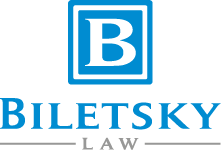The Talent Agency Act and You
 “Procure employment.” These two words are something every artist and manager (and possibly others acting on behalf of an artist) should be aware of. In 1978 the Talent Agency Act was passed in California which required that any person acting as an artist’s agent be licensed. Most importantly, these laws broadly defined those who act as agents as those who “procure employment” for another. Also important is the repercussions for those who violate the Talent Agency Act (TAA).
“Procure employment.” These two words are something every artist and manager (and possibly others acting on behalf of an artist) should be aware of. In 1978 the Talent Agency Act was passed in California which required that any person acting as an artist’s agent be licensed. Most importantly, these laws broadly defined those who act as agents as those who “procure employment” for another. Also important is the repercussions for those who violate the Talent Agency Act (TAA).
One of the most famous of these cases is the 1996 case of the musical band the Deftones versus their former manager, Dave Park. Dave Park had sued the Deftones for failure to pay earned commissions. In return, the Deftones filed a complaint with the California Labor Commissioner regarding Park’s violation of the TAA. The Labor Commissioner’s investigation found that Park had violated the TAA on 84 occassions by procuring employment without a license. The result? All commissions earned by Park in relation to the Deftones was disgorged and returned to the Deftones and all management agreements were cancelled.
This hasn’t been the only instance where the TAA has caused headaches for managers though. Matthew Katz, the former manager of Jefferson Airplane, forfeited more than $12,000,000 resulting from his violation of the TAA. Other sizeable cases can be found in almost every corner of the entertainment industry from music, to movies, to theatre.
From the above examples, you would think that managers across the board would be inclined to attempt to keep their distances from any kind of activity that could potentially violate the TAA. But, that’s not necessarily the case. The roles of managers between industries are very much the same, yet vastly different, depending on the industry.
In the motion picture and television industry, the role of a manger is more confined to that of how the role of the manager is defined. The manager will look after the day-to-day operations, ensure that all of the projects are lined up and running smoothly, and make sure that all of the jobs that the agent had obtained for you are on your calendar and ready to go.
In the music industry, the role of the manager can sometimes be a bit more blurred. Your manager will do similar tasks such as ensuring that your recording projects are lined up and going smoothly, but from time to time, a manager may be able to book you a gig or an appearance. Although this seems to be within the normal realm of a manager’s duties, you can see why “procuring employment” could be as simple as booking a gig for your client or arranging an appearance where the client gets paid (autograph signing, product sponsorship, etc.).
So, after all the problems that the TAA can cause a manager, you may be asking yourself, why don’t these managers just obtain a Talent Agency license to make it so that they don’t have to deal with these sort of problems? In many instances, companies may offer both managerial and agency services and may be equipped with the necessary licenses. But for the most part, it is usually a pretty good bet that your manager does not also simultaneously have their agency license.
California has enacting somewhat strict guidelines and regulations for agents to be licensed. Although not prohibitively expensive or complex, the process is somewhat costly and lengthy enough to deter your average manager from also pursuing an agency license without having a legitimate agency business to run.
So where does this leave you? Well, if you are on the talent side, you can rest assured knowing that the law is usually on your side when it comes to keeping your team compliant with the law. On the management side, you need to walk a thin line in providing your services to your client to ensure that you do not run afoul of the TAA.
For more information on the Talent Agent Act or for assistance in a matter related to the TAA, contact Biletsky Law.



